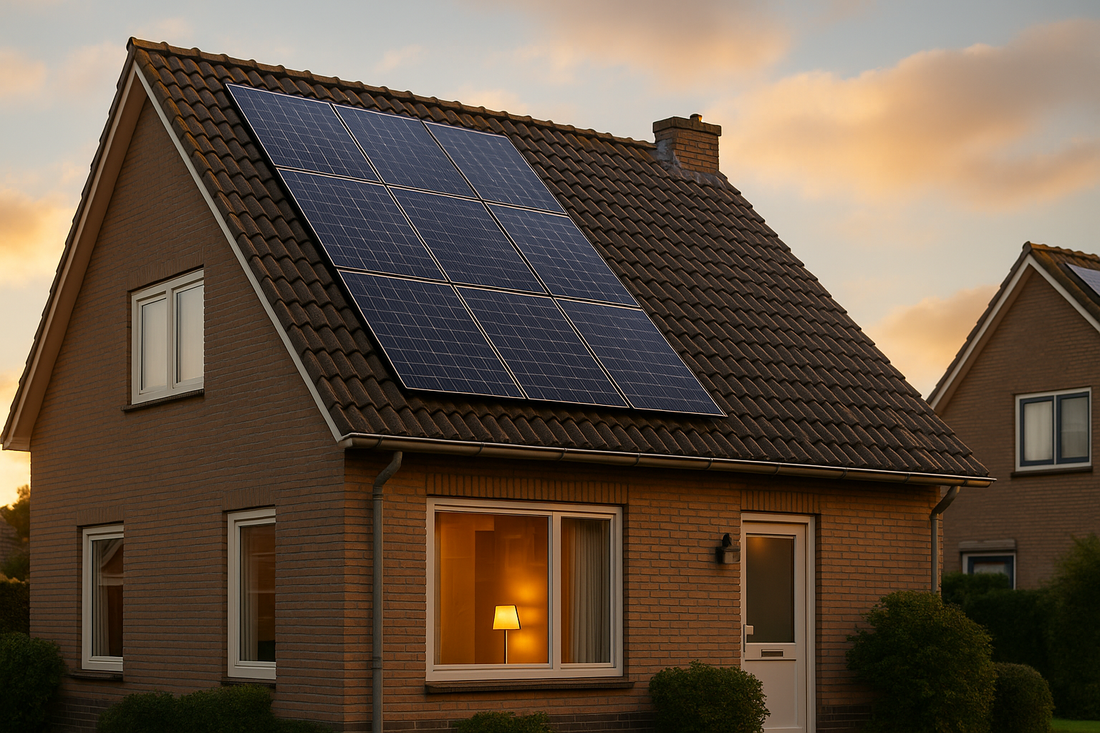
Solar no longer means free money — here's how to stay smart after the end of net metering in 2027
Share

What happens after the end of net metering in 2027?
The Netherlands will discontinue its net metering scheme in 2027. For households with solar panels, this could mean paying up to €1,000 extra per year in electricity costs— unless you take action.
Currently, you send excess solar power that you generate during the day back to the grid, and you can use the same amount again "for free" in the evening.
That made solar panels a great investment for many years.
But starting in 2027, that will change. You'll still be supplying power to the grid, but you'll receive little in return —while in the evenings, you'll pay full price to buy back power.
Energy companies are already adjusting their rates
Some energy suppliers have already announced their future rates for the period after the end of the subsidy.
Take Greenchoice for example:
● In 2027, the feed-in tariff will decrease from 15.2 cents/kWh to 5.4 cents/kWh
● At the same time, the “feed-in tariff” (also called feed-in penalty) will increase to 5.2 cents/kWh
In short: for every kWh you supply to the grid, you only have a net amount of €0.0025 left .
Doesn't sound like a good deal — and unfortunately, it only gets worse when you look at the bigger picture.
Solar energy that you don't use yourself will soon be practically worthless
Suppose you have a 3kW solar panel system on your roof. On average, that generates about 3,000 kWh per year . If you use 20% of that directly during the day, you're left with 2,400 kWh that you feed back into the grid.
At the new rates, that only amounts to about €6 per year .
Meanwhile, you still have to buy electricity in the evenings. And if electricity from the grid costs €0.30–€0.35 per kWh , you'll pay almost €1,000 per year for your evening consumption.
In other words: you give away your solar power almost for free during the day, and buy it back at full price in the evening.
How to stay ahead smartly: Maximize self-consumption + Plug-and-play storage
The most common solution: use more power during the day — when your solar panels are producing it.
Think of appliances such as washing machines, dryers, dishwashers, or charging your electric car during the day instead of in the evening.
But in practice you run into limitations like this:
● Many older devices cannot be automated
● Even if you run everything at the same time, you won't use all the solar energy
● And let's be honest: most people are not at home during the day
That's why home batteries are becoming increasingly important. They store solar power generated during the day, so you can use it in the evening— when electricity is most expensive .
But there's a problem: traditional battery systems are expensive .
A 5kWh system can easily cost €4,000–€5,000 , mainly due to high installation and electrical costs. For many households, the investment is simply not worth it.
That's where plug-and-play batteries come in
Take the Lunergy X2400 AC for example.
You simply plug it into a standard electrical outlet — no wiring, no installer, no permits needed .
It works with any solar installation , is up and running in minutes and delivers a much better return on your investment .
Self-consumption becomes the new normal
Now that net metering is disappearing, the focus is shifting from “how much electricity you generate” to
“how much electricity you can actually use yourself.”
And for that you need a solution that is simple, affordable and flexible .
With plug-and-play storage like Lunergy, you're ready for the future — on your terms.
